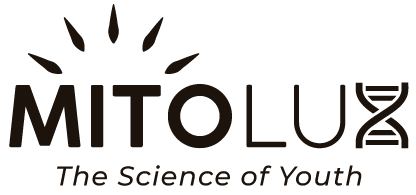In recent years, the search for optimizing cellular health and energy levels has led to the discovery and renewed interest in two remarkable interventions: red light therapy and methylene blue. While each has its unique attributes and applications, there's growing intrigue surrounding their combined potential. Can these two therapies, when used together, offer benefits that outshine their standalone effects? Let's explore the science behind this exciting possibility.
Red Light Therapy: Shedding Light on Cellular Function
Red light therapy, also known as photobiomodulation, uses specific wavelengths of red and near-infrared light to stimulate biological processes in our cells. The principle behind its therapeutic potential lies in its ability to penetrate skin layers, affecting the mitochondria – the cellular powerhouses responsible for producing energy in the form of ATP.
Key Benefits:
- Mitochondrial Stimulation: Red light therapy can enhance mitochondrial function, leading to increased ATP production.
- Reduced Oxidative Stress: By modulating reactive oxygen species (ROS), red light therapy can mitigate oxidative damage in cells. (source)
Methylene Blue: A Colorful Boost for the Mitochondria
Methylene blue, a synthetic blue dye, has a history of use in medicine, primarily as a treatment for methemoglobinemia. However, its recent resurgence in popularity is due to its potential as a mitochondrial enhancer.
How Does It Work?
- Electron Transport Chain Support: Methylene blue is known to donate electrons to the mitochondrial electron transport chain, particularly at complex IV. This donation can boost the efficiency of ATP production. (source)
- Antioxidant Properties: Methylene blue also serves as a free radical scavenger, reducing oxidative stress and preserving mitochondrial integrity. (source)
The Combined Power: Red Light Therapy and Methylene Blue
Now, what happens when you combine the mitochondrial-boosting properties of both red light therapy and methylene blue? Here's the exciting synergy:
- Enhanced Energy Production: With red light therapy enhancing mitochondrial activity and methylene blue donating electrons to further optimize the electron transport chain, there's potential for a dramatic increase in ATP production. This synergy can lead to heightened cellular energy and vitality.
- Augmented Defense Against Oxidative Stress: Both interventions possess antioxidant properties. While red light therapy modulates ROS, methylene blue scavenges free radicals. Together, they could offer a dual-layered protective shield against oxidative stress, preserving cellular and mitochondrial health. source
- Potential Neuroprotective Effects: Preliminary studies suggest that both methylene blue and red light therapy might have neuroprotective benefits. Their combined application could be explored further for neurodegenerative conditions, offering hope for ailments like Alzheimer's and Parkinson's disease. source for methylene blue, source for red light therapy
Considerations and Implications
While the combined potential of red light therapy and methylene blue seems promising, it's essential to tread with caution:
- Dosage Matters: The beneficial effects of methylene blue are dose-dependent. While low doses might improve mitochondrial function, higher doses could have the opposite effect. (source) Always consult with a healthcare professional before starting any supplementation.
- Research is Ongoing: The synergistic potential of combining these therapies is still a budding area of study. As with all novel interventions, further research is required to understand the full scope of benefits and any potential side effects.
Conclusion
The convergence of two powerful mitochondrial enhancers – red light therapy and methylene blue – paints a hopeful picture for the future of cellular health optimization. While standalone, each offers a range of benefits; together, they might just be the supercharged duo we've been waiting for.
Disclaimer: This article is for informational purposes only and does not constitute medical advice. Always consult with a healthcare professional for any medical concerns or before starting new treatments.
(Note: The references and rankings are based on current literature as of my last training cut-off in 2022. For the most up-to-date and comprehensive information, always consult recent studies or professionals in the field.)


